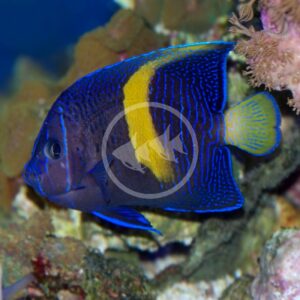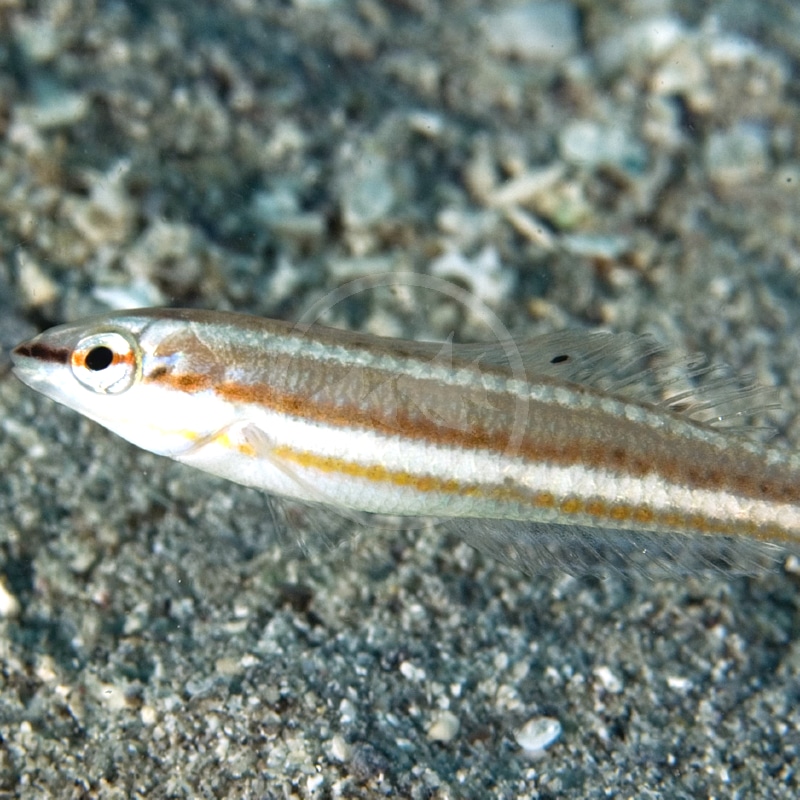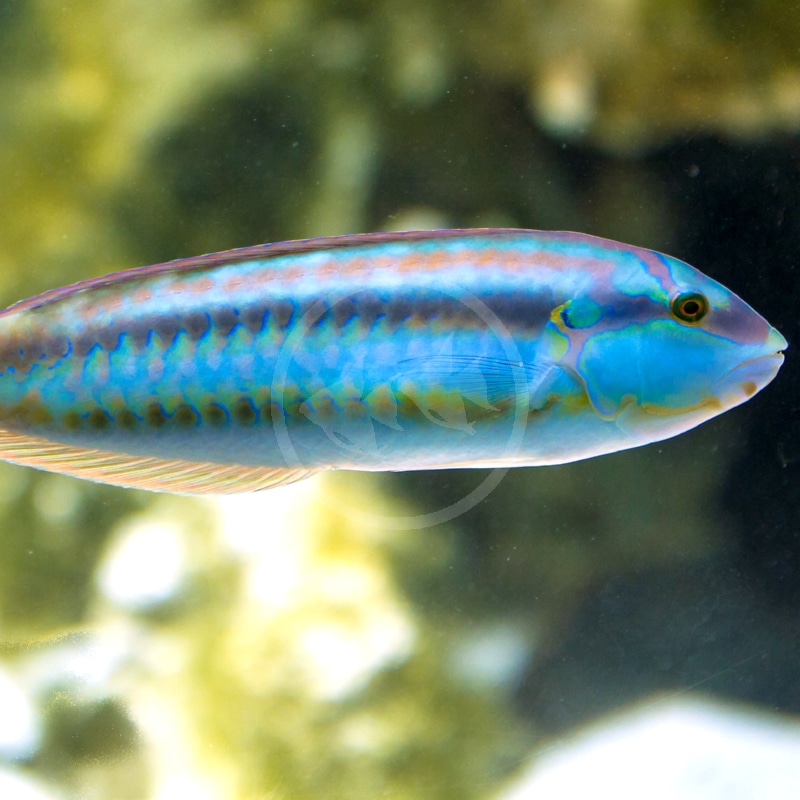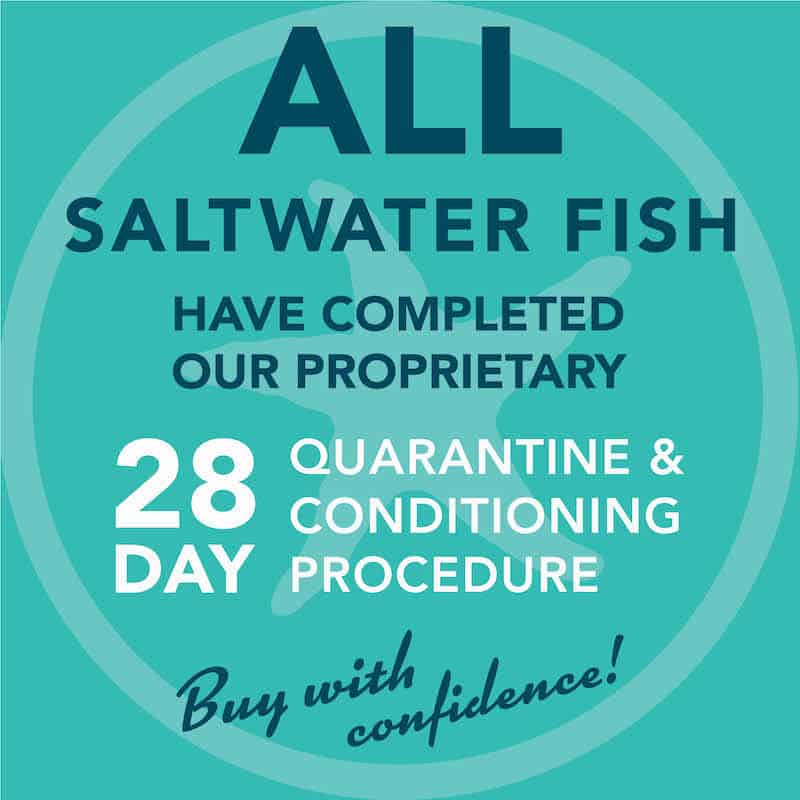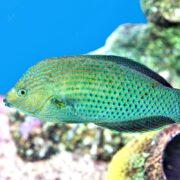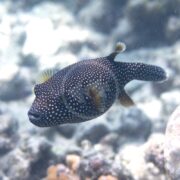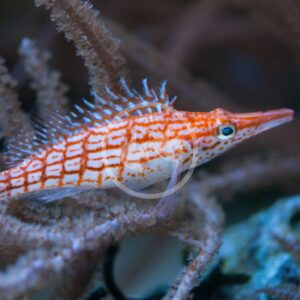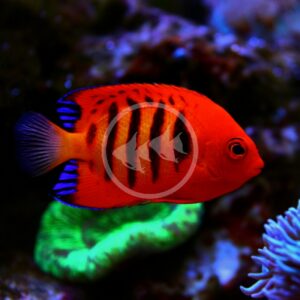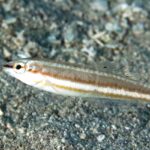
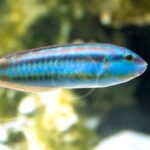

WRASSE – BLACK STRIPE Halichoeres bivittatus
$69.99
The Black Stripe Wrasse, also known as the Slippery Dick Wrasse, is native throughout the western Atlantic Ocean and Caribbean Sea. Like all wrasses in the genus Halichoeres, the Black stripe wrasse absolutely requires a moderately-sized to fine sandy substrate in order to be able to bury themselves at night for protection or if felt threatened during daylight. In fact, it is very common for your newly introduced wrasse to immediately bury themselves once released into the aquarium. As juveniles, Black stripe wrasses have a pale body with a dark horizontal stripe through the middle of their body. As they mature, Black stripe wrasses develop more color in their bodies including yellows, greens and blues. The dark stripe they had as juveniles may remain, typically in females), or be replaced with two less prominent horizontal stripes. There is a lot of variation in color and patterning in this species depending on sex and age. A Black stripe wrasse may be sought after for not only their active presence in a reef aquarium, but for their incredible natural ability to control and eliminate nuisance red Planaria flatworms and pyramidellid snails that sometimes hitch hike on corals or live rock. This behavior is exhibited across most Halichoeres wrasses. Black stripe wrasses can reach a size of approximately 10″.
Care Level: Easy
Temperament: Semi-Aggressive
Reef Compatible: With Caution
General Description: The Black Stripe Wrasse, also known as the Slippery Dick Wrasse, is native throughout the western Atlantic Ocean and Caribbean Sea. Like all wrasses in the genus Halichoeres, the Black stripe wrasse absolutely requires a moderately-sized to fine sandy substrate in order to be able to bury themselves at night for protection or if felt threatened during daylight. In fact, it is very common for your newly introduced wrasse to immediately bury themselves once released into the aquarium. As juveniles, Black stripe wrasses have a pale body with a dark horizontal stripe through the middle of their body. As they mature, Black stripe wrasses develop more color in their bodies including yellows, greens and blues. The dark stripe they had as juveniles may remain, typically in females), or be replaced with two less prominent horizontal stripes. There is a lot of variation in color and patterning in this species depending on sex and age. A Black stripe wrasse may be sought after for not only their active presence in a reef aquarium, but for their incredible natural ability to control and eliminate nuisance red Planaria flatworms and pyramidellid snails that sometimes hitch hike on corals or live rock. This behavior is exhibited across most Halichoeres wrasses. Black stripe wrasses can reach a size of approximately 10″.
Diet Requirements: Black stripe wrasses are carnivores, actively hunting tiny crustaceans (e.g., copepods, featherdusters) throughout the day. A diet consisting of various meaty preparations such as brine shrimp, mysis shrimp, and other mixed frozen foods that contain algae, such as spirulina, will maintain optimal health and coloration. We highly encourage soaking frozen foods in vitamin and fatty acid supplements, as these wrasses have very high metabolisms. Multiple, small feedings per day rather than one large feeding can also help and in turn create more of a natural environment for a Black stripe wrasse as it would feed in the wild. Black stripe wrasses will also accept high quality flake or pellet foods, which is great for nutritional gaps and variety.
Care Requirements: An established, minimum 90 gallon aquarium with a 3″ sandbed at the very least is needed for a Black stripe wrasse. A tight fitting lid is a must because these wrasses are known to jump out of aquariums. Black stripe wrasses enjoy a variety of rock work and crevices to swim through and around while they hunt. Such live rock arrangements can also help to make it feel secure and encourage more outgoing behavior. Black stripe wrasses are one of the more semi-aggressive members in the genus, though this behavior will likely be exhibited more as an adult. Very large specimens could predate on small ornamental shrimps, hence why they are to be added into a reef setting “with caution.” Recommended water conditions, 72-78° F, KH 8-12, pH 8.1-8.4, salinity 1.020-1.025.
Purchase Size: Juvenile Medium: 2-3/4″ to 3-3/4″
Note: Your item may not look identical to the image provided due to variation within species. Purchase sizes are approximate.
Dry goods orders are shipped via US Postal Service or UPS to the address provided at checkout based on the selection made in your website shopping cart. Product is carefully packed to help prevent any damage during shipping. Once processed you will receive a shipment notification via email with tracking number, and delivery notification. Please allow 48 hours for processing after your order is placed.
Perishable items (i.e. live plants, refrigerated/frozen foods) are shipped via US Postal Service 2-3 day to the address provided at checkout for a $25.00 flat rate charge. Items are packed with secure packing material and heat, cold, or Cryo packs as needed to maintain safe temperatures during transit. If one or more perishable items are in the shopping cart at checkout the $25.00 perishable shipping charge will automatically appear and need to be selected. Once processed you will receive a shipment notification via email with tracking number. Please allow 48 hours for processing after your order is placed.
Livestock (i.e. fish, invertebrates, coral) are shipped via UPS Overnight to the address provided at checkout for a $55.00 flat rate charge. Livestock is packed in insulated styrofoam boxes with secure packing material and heat, cold, or Cryo packs as needed to maintain safe temperatures during transit. If one or more livestock items are in the shopping cart at checkout the $55.00 livestock shipping charge will automatically appear and need to be selected. Livestock is shipped Monday through Wednesday ONLY (no weekend delivery is available) weather permitting, and we reserve the right to delay shipping until conditions are appropriate for safe arrival. Once your order is placed we will contact you to arrange the best shipping date based on these criteria. Someone must be available to receive the livestock order on the first delivery attempt. Once processed you will receive a shipment notification via email with tracking number. Please allow 48 hours for processing after your order is placed.
For mixed dry goods/perishable & livestock orders items will be shipped via their corresponding shipping methods outlined above. Dry goods will be shipped via US Postal Service or UPS based on your selection and checkout, while livestock will ship via UPS Overnight for a $55.00 flat rate charge. You will receive separate notifications and tracking numbers for the dry goods and livestock. Please note due to different carriers and shipping methods dry goods and livestock may arrive on different days.
Related products
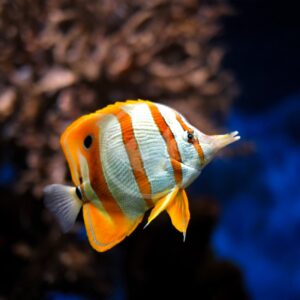
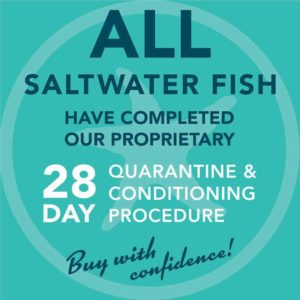
BUTTERFLY – COPPERBAND Chelmon rostratus
$109.99 – $219.99Price range: $109.99 through $219.99HAWK – LONGNOSE Oxycirrhites typus
$129.99 – $159.99Price range: $129.99 through $159.99ANGEL DWARF – FLAME Centropyge loriculus
$149.99 – $199.99Price range: $149.99 through $199.99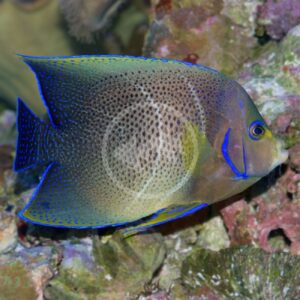
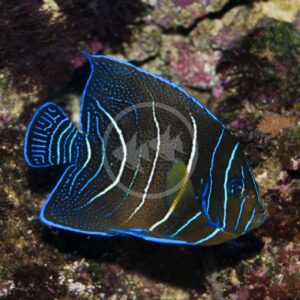
ANGEL – KORAN Pomacanthus semicirculatus
$89.99 – $189.99Price range: $89.99 through $189.99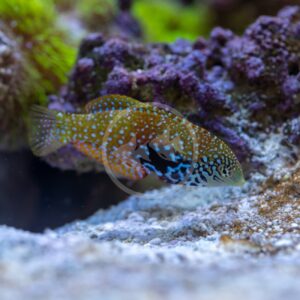

WRASSE – LEOPARD VERMICULATE Macropharyngodon bipartitus
$129.99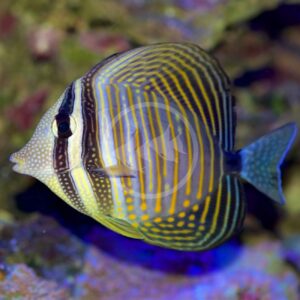

TANG – SAILFIN DESJARDINII Zebrasoma desjardinii
$169.99 – $199.99Price range: $169.99 through $199.99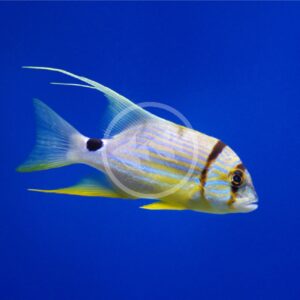

SNAPPER – HI FIN Symphorichthys spilurus
$149.99